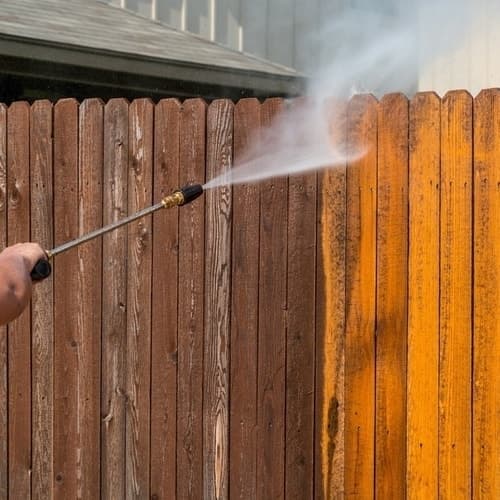How to Select the Right Fence Discoloration for Your Residential Property
When it comes to improving the look and sturdiness of your home's fence, choosing the appropriate tarnish is an important choice that requires cautious consideration. Exactly how can you make sure that you choose the perfect fence stain that aligns with your residential or commercial property's design and upkeep demands?
Recognizing Timber Kind
To pick the suitable fence discolor, it is vital to have a detailed understanding of the various types of timber commonly made use of for fencing. When picking a fence discolor, it is essential to take into consideration the kind of timber being utilized to make certain compatibility and ideal defense. Understanding the qualities of different wood types will aid you make an informed choice when it comes to selecting the best fence discolor for your residential property.
Selecting the Right Color
Choosing a suitable tone for your fence stain is an important choice that significantly affects the general visual appeal of your residential or commercial property. Lighter colors such as whites or light grays can make a fencing show up larger and add a touch of style to your building. Ultimately, the best shade selection will improve the elegance of your fence and raise the overall aesthetic allure of your home.

Considering Openness Degrees
When choosing the best color for your fencing tarnish, another crucial element to think about is the level of openness that will best suit your property's visual and maintenance requirements. Transparency levels in fence stains typically fall under three categories: transparent, semi-transparent, and solid. Clear spots enable the natural elegance of the timber to reveal with while giving very little protection versus the elements. They are perfect for brand-new or properly maintained fences where showcasing the timber grain is a concern. Semi-transparent stains supply a balance in between color enhancement and security, allowing some wood grain to be noticeable while supplying moderate securing from UV rays and moisture. Solid discolorations, on the other hand, give the most protection as they entirely cover the wood with a nontransparent finish. These are ideal for older fencings or those looking for substantial security or shade adjustment. Consider the degree of exposure your fencing encounters, the preferred upkeep frequency, and the visual you wish to accomplish when selecting the appropriate transparency degree for your fencing discolor.
Reviewing Maintenance Demands
Thinking about the long life and maintenance of your fence, examining the upkeep needs is vital in identifying one of the most appropriate fencing discolor for your residential or commercial property. The degree of upkeep required for your fence can differ relying on variables such as the type of timber, weather conditions in your area, and your personal preferences.
When assessing upkeep needs, it is necessary to think about the sturdiness of the fence tarnish. Some spots need even more frequent reapplication than others, so choosing a discolor with a much longer life-span can assist lower the total upkeep demands of your fence (Fence Staining Service). In addition, factors such as resistance to UV rays, water, and mold can influence exactly how typically you require to re-stain your fencing

Testing Samples Before Application
Before using any kind of fencing tarnish, it is advisable to perform example examinations to ensure compatibility with the timber and preferred aesthetic end result. Examining examples permits you to evaluate exactly how the tarnish will communicate with the specific kind of wood utilized in your fence, as various woods can soak up spots in different ways. To start, choose a small low-profile location of the fencing to apply the discolor samples.
Verdict
In final thought, selecting the appropriate fence tarnish for your home includes understanding the timber kind, choosing the appropriate color, considering openness degrees, examining maintenance requirements, and screening samples prior to application (Fence Staining). By taking these aspects into consideration, you can guarantee that your fence tarnish matches your residential property while providing the necessary protection and durability. Make an informed choice to improve the appearance and longevity of your fence